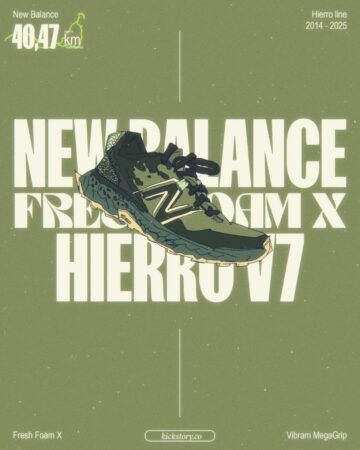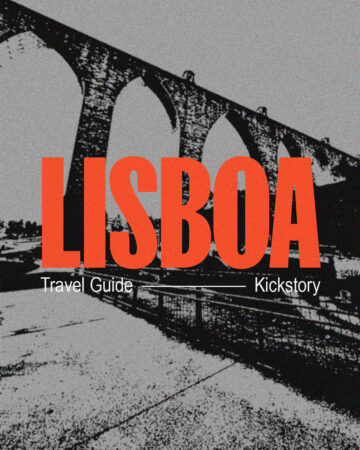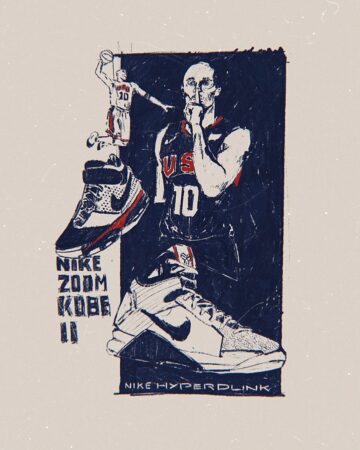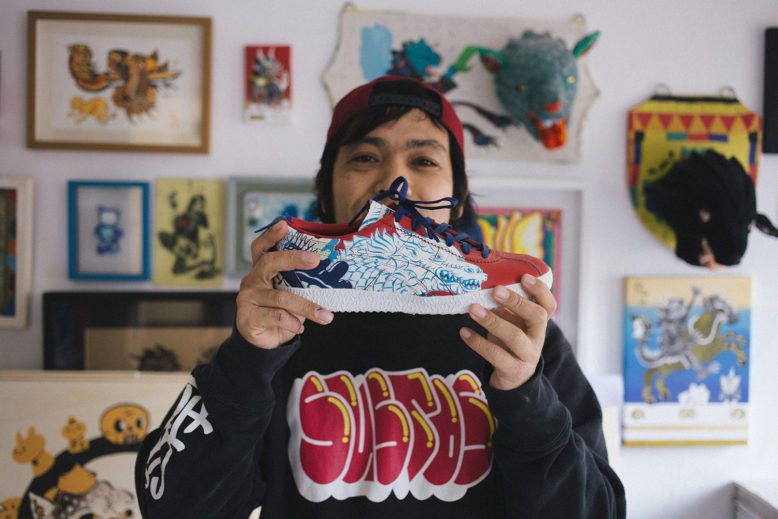
Visiting Atsuo studio, he’s not only known for his monsters, dragons and cute creatures, but also for being a very high energy person!
Enchanted with the “mess” and diversity from here, Atsuo left his hometown Kyoto to come to live as an artist here in Brazil. But the theme and inspirations for his work are clearly a reflection from his origins.
Atsuo had the opportunity to make his own interpretation of the Mexico Delegation for a Onitsuka Tiger collection called “The Art of Mixing”, which reunited 4 artists from the japanese origins to celebrate the Brazil and Japan’s connection, where each one of them were able to apply their art in one siluet, and create their own interpretation about the impact of the two cultures.

“In Japan, your word is already a commitment. Here, it’s “I forgot,” or it’s late. The difference, I think, is cultural. It’s two very different cultures. And here, the culture is very mixed, Japanese, Italian, many Africans, Koreans, and Asians. This I think is cool, the cultural mix is very interesting, very crazy. And I think that here it’s more relaxed. In Japan, it’s correct, it’s cool, but it’s much more stressful because you can’t make mistakes, you can’t be late – like robots.”
For you, what was the biggest shock in leaving Japan and moving to Brazil?

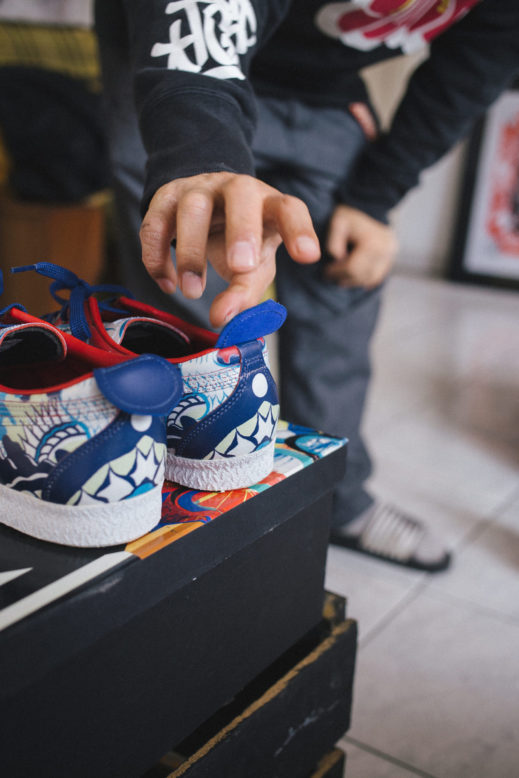
And how did you learn to illustrate? Was it that came naturally, or was it a learning process?
Atsuo I’ve been really into movies and films ever since I was a child. My mother also enjoys them, and the first time I went to the movies was with her. And I love a director named Ray Harryhausen, he’s American, but he’s from the old days, and he used to make stop motion movies of monsters with people. And since I was 5 years old, I thought: “Wow, that’s really crazy! I liked the monsters, and then I started to illustrate. And in Japan, there are a lot of monsters, and it’s a little scary, ghosts and everything, it’s though (laughs). There are ghosts in Brazil, but they are not scary, whereas, in Japan, they are scary. Here the ghosts are calmer, cuter (laughs).
Later on, I worked as a window designer, putting clothes on mannequins. So I know brands, and I like fashion a lot too. But I started as an artist 20 years ago; I worked on weekends with art, painting, and sculpture. I worked for 10 years in Japan and another 10 here. It’s been 18 or 20 years, more or less, doing my art.
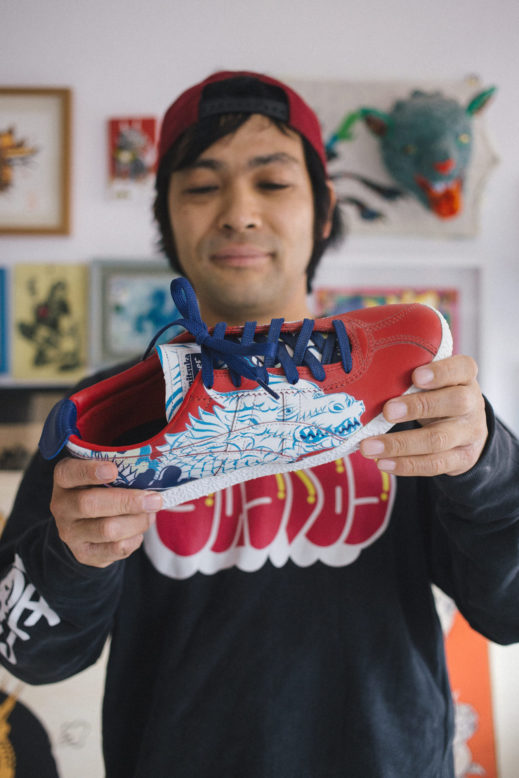

It's cool that you can see a lot of your evolution as an artist. You changed from one style to another.
Last month you had an exhibition here in São Paulo, at the Alma de Rua gallery. Tell us more about it.
“But it’s interesting, in Japan, there’re temples with dragons, large drawings, and sculptures. The meaning is different. There, it means success, happiness, and protection too. And here in Brazil, it’s regarded as something dangerous.”
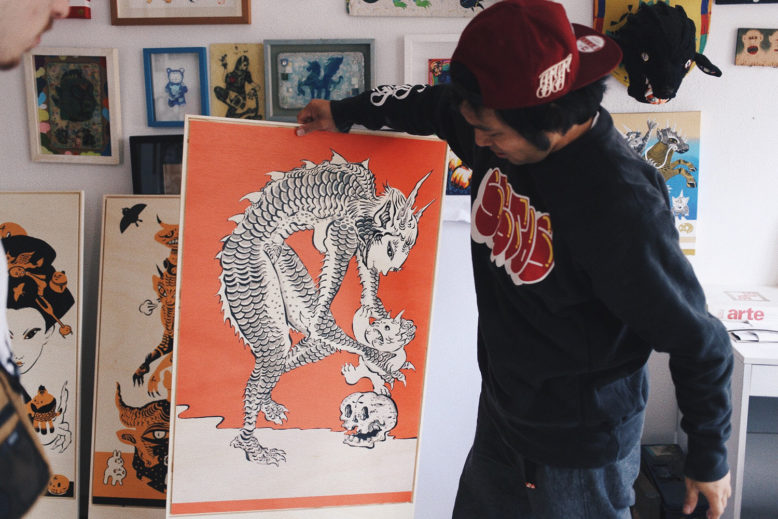
What inspired you to make this exhibition? There is a uniformity in the colors and also in the elements you use.
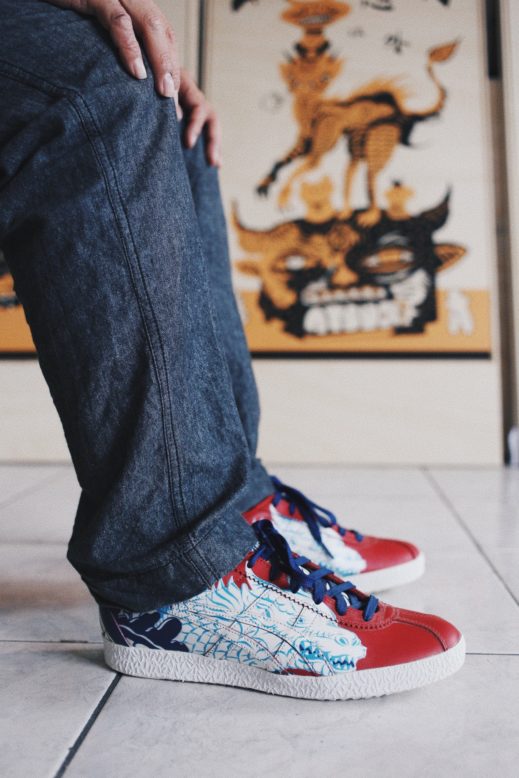


“Each one received a model, and I got the Mexican one. To make the sneaker, I was inspired by the flags of Brazil and Japan – both have circles; here in Brazil, it means earth, and in Japan, the sun.”
Now, let's talk about your sneaker and the collab with Onitsuka. How did this invitation to participate in the project happen?

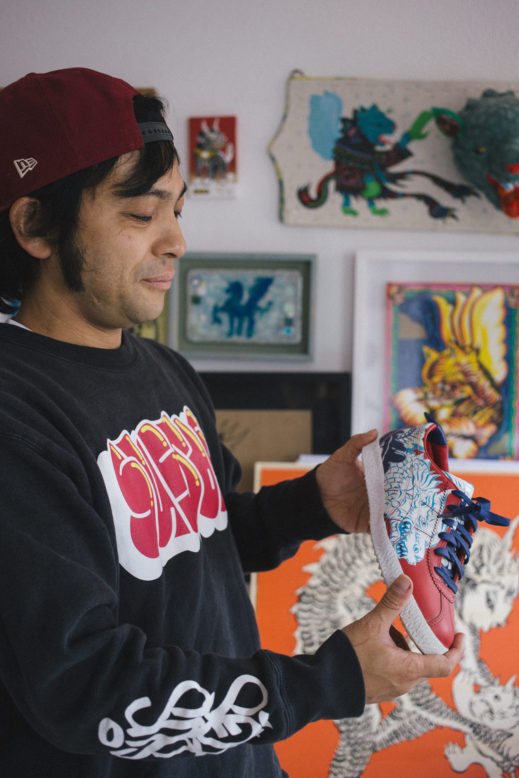

Before you did this, did you already like or were interested in sneakers?
Atsuo Oh, I like them a lot. Even other brands, Nike, Adidas. And now I know Öus, they are 10 years old, very young, and very good. And they have a factory here. I don’t know yet, I have already talked to Narciso and people from Asics, and I’d like a collab with Asics and Öus. It’s complicated. But I’d like to; I think it would work out well.
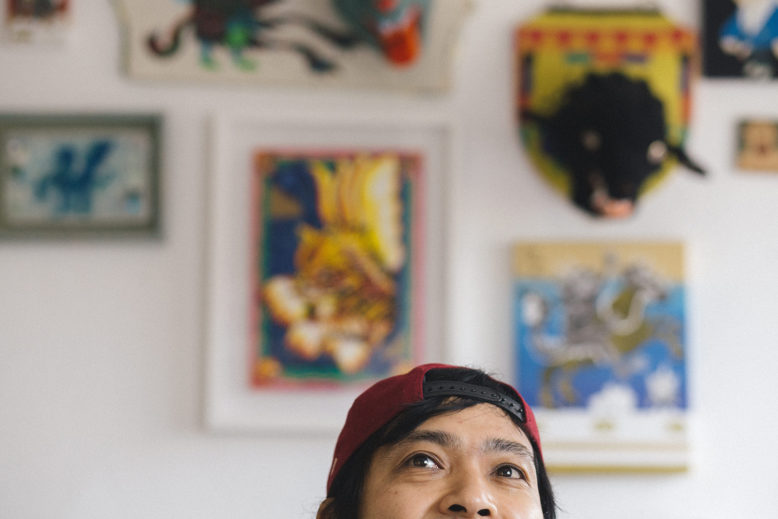
Onitsuka Tiger Mexico Delegation
Collab: 2016
Owner: Atsuo Nakagawa
Photos: Pérola Dutra
